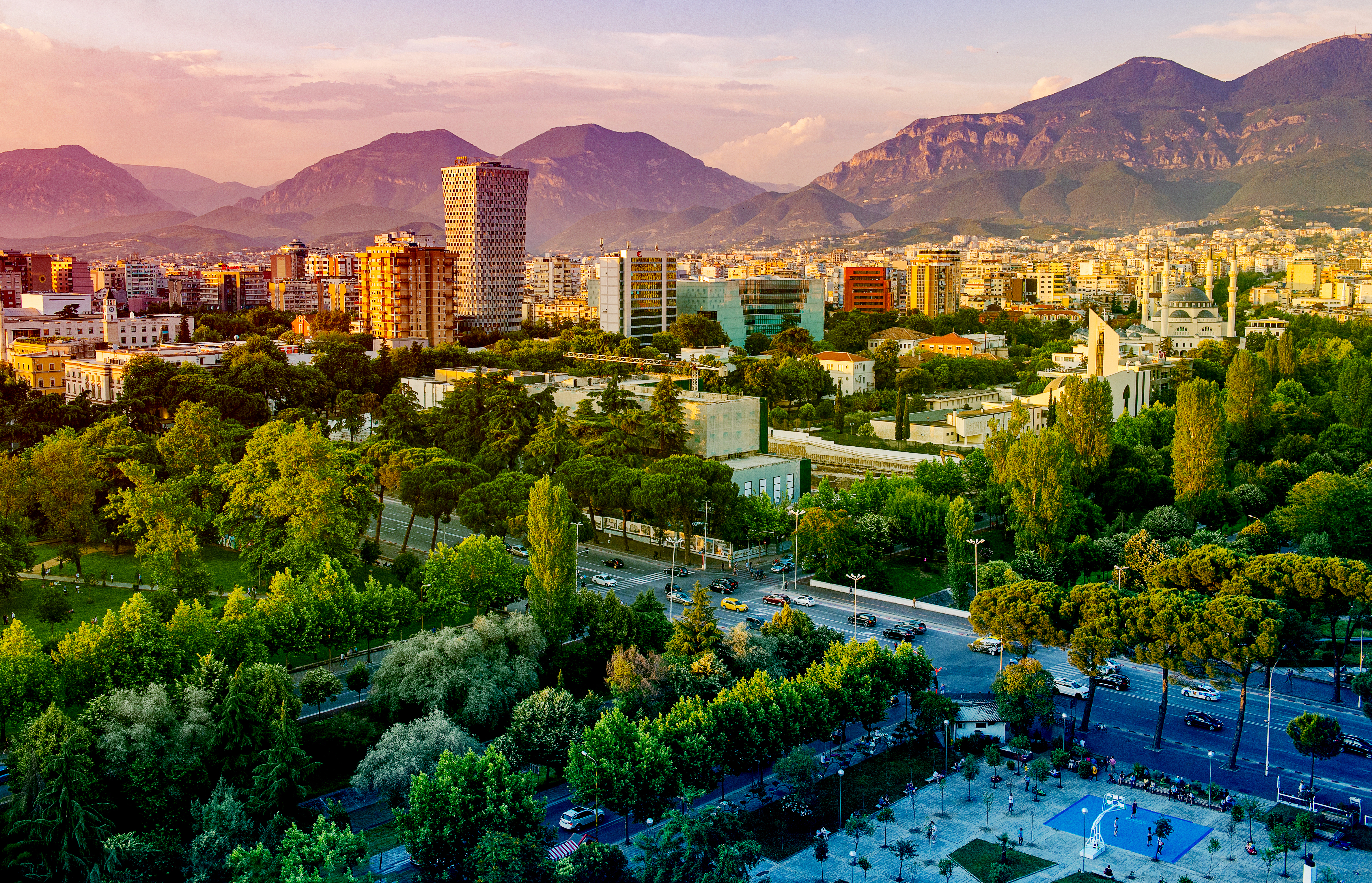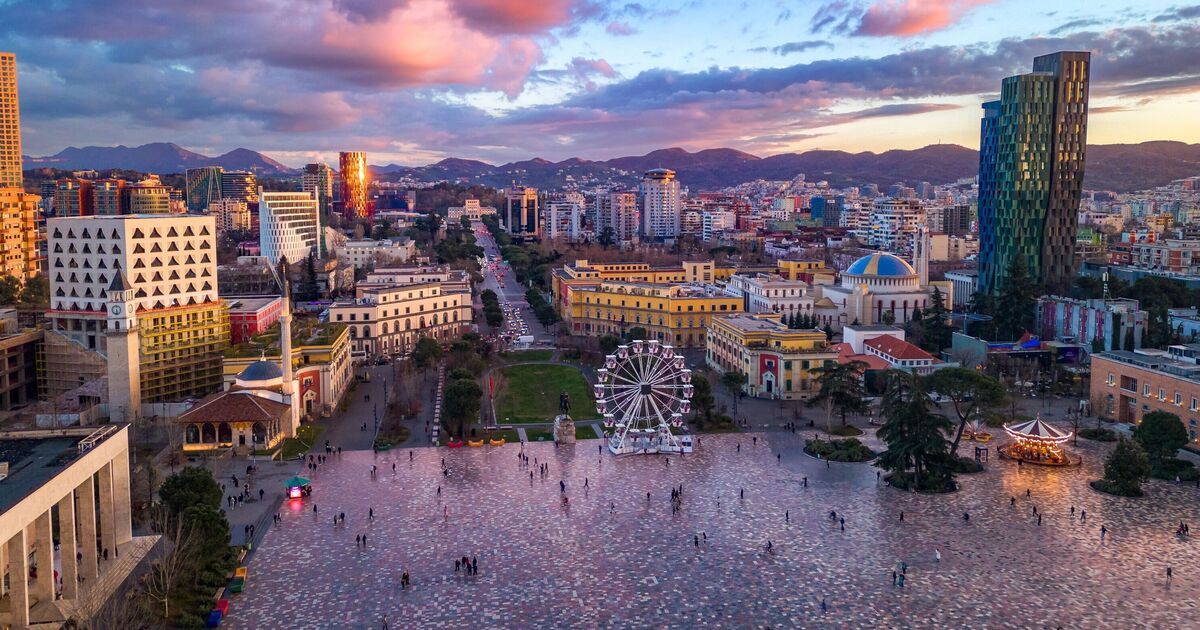



Tirana, the capital of Albania, is known for its colorful Ottoman-, Fascist- and Soviet-era architecture. Pastel buildings surround the city's focal point, Skanderbeg Square, which is named for its equestrian statue of a national hero. On the square's north end is the modernist National History Museum, covering prehistoric times through Communist rule and the anti-Communist uprisings of the 1990s. ― Google
April to June and September to October: Best seasons with mild weather and fewer tourists.
July and August: Warm and sunny but can get hot (30°C+); good for nightlife and events.
By Air: Tirana International Airport (Nënë Tereza) is the main entry point, about 30 minutes from the city center.
By Bus: Well-connected with other Balkan cities like Skopje, Pristina, Podgorica, and Athens.
By Car: Roads from Montenegro, Kosovo, and North Macedonia are scenic and straightforward.
Skanderbeg Square: The heart of the city, home to the equestrian statue of national hero Skanderbeg.
Et'hem Bey Mosque: Historic Ottoman-era mosque with intricate frescoes.
Pyramid of Tirana: A striking communist-era monument that now serves as a cultural venue.
Bunk’Art Museums (1 & 2): Former nuclear bunkers turned into fascinating museums about Albania's communist past.
National History Museum: Located on the square with a large mosaic facade and exhibits on Albanian history.
Wander Blloku district: Once reserved for communist elites, now a hotspot for cafés, boutiques, and nightlife.
Ride the Dajti Express cable car: Offers panoramic views over Tirana and access to mountain trails and restaurants.
Explore Pazari i Ri: The new bazaar area, perfect for tasting local food, buying produce, and enjoying modern restaurants.
Visit art galleries: Like the National Gallery of Arts and smaller contemporary spaces.
Boutique hotels and modern apartments are widely available in the city center.
Budget hostels in Blloku and near the bazaar attract younger travelers.
Luxury hotels with rooftop bars are growing quickly around Skanderbeg Square.
Traditional dishes: Try tavë kosi (baked lamb with yogurt), byrek (savory pie), and fërgesë.
Seafood and grilled meats are common in most restaurants.
Coffee culture is strong: Grab an espresso or macchiato at a street café.
Raki: A strong local spirit made from grapes — offered often as a gesture of hospitality.
Albanians are known for their warmth and hospitality. It’s common for locals to invite guests for coffee or a meal, even if they’ve just met.
Respect for family values and elders is deeply rooted in daily life.
Tirana thrives on its café culture — it’s not just about coffee, but a social ritual.
People meet friends, discuss politics, read the paper, or simply relax in the many sidewalk cafés, especially in the Blloku district.
Coffee shops open early and stay busy all day, especially on weekends.
Tirana reflects Albania’s religious harmony — Islam, Orthodox Christianity, and Catholicism coexist peacefully.
Many Albanians identify as secular, and religious practices are often moderate.
Religious buildings (mosques, churches) are part of the cityscape and respected across communities.
Street art is a huge part of Tirana’s identity — walls, buildings, even electrical boxes are painted with murals and messages.
There’s a strong push for contemporary art and design, with galleries, pop-up shows, and youth-driven events throughout the year.
Public spaces are lively and often host cultural festivals, concerts, or pop-up food events.
The official language is Albanian, which is unique and unrelated to neighboring languages.
However, many young people speak English, Italian, or Greek, especially in urban areas like Tirana.
While modern fashion dominates in the capital, traditional clothing, dance, and music still feature in festivals, weddings, and rural celebrations.
The iso-polyphonic music of southern Albania (UNESCO-recognized) is celebrated during cultural events.
Meals are social and often slow-paced. Hospitality is shown through food.
Traditional dishes are hearty and homemade — often using seasonal, local ingredients.
Even in cities, people often prefer food “like grandma made it.”
Tirana still carries the mark of its Communist past — visible in the architecture, public art, and historical narratives.
However, locals, especially the younger generation, are reclaiming the city with color, energy, and innovation.